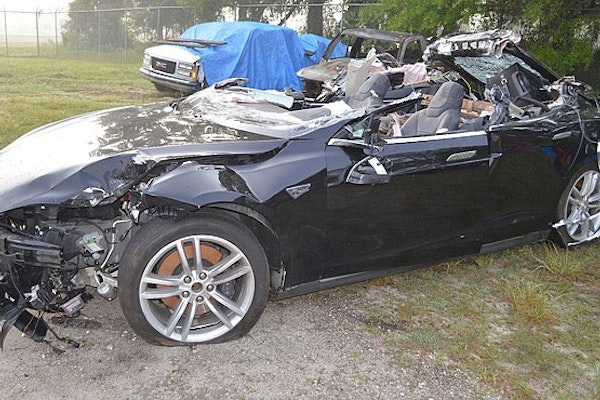
What Siri And Alexa Will Never Do
For years now, Siri, Alexa and Google Home have been portrayed as just the beginning of a pathway to virtual assistants that will give each of us a J.A.R.V.I.S., the voice-activated software used by Iron Man to handle, well, just about everything.
November 22, 2022
Technology

Serious Cyberattacks On The Rise, Report Shows
About 75% of organisations have experienced a serious cyberattack in the past three years -- up from 60% last year -- according to the 2022 Cyber Security Insights Report conducted by S-RM, a global intelligence and cybersecurity consultancy.
November 18, 2022
Excess & Surplus Lines
Technology

Navigating the Complex Landscape of Timed Demands
There is a growing trend of states recognizing time-sensitive demands, which can carry extra-contractual exposures for insurers. Insurers are faced with large claim volume, excessively large demand packages, and time-sensitive deadlines imposed upon them by state regulators and agencies.
November 17, 2022
Technology

State Farm Insurance Company Sues Amazon Over Patent Infringement
The State Farm insurance company has filed a lawsuit against Amazon, accusing the ecommerce giant of having ‘willfully infringed’ on State Farm patented technology at the core of Elder Care Technology in order to offer a competing product.
November 14, 2022
Litigation
Technology

How Real-Life Sensations in Virtual Reality Could Deepen the Experience
Your experiences in virtual reality could soon get much more lifelike. Palmer Luckey, sometimes credited with creating modern virtual reality, claims to have built a VR headset that will kill the user if they die in the game they’re playing.
November 10, 2022
Education & Training
Technology

How Machine Learning is Transforming Insurance Claims
Machine Learning as been one of the most prolific areas when it comes to high-impact use cases for the insurance industry. And within insurance, claims management offers one of the most promising areas to apply this technology due to the large amount of data available to train algorithms and the consistency of principles applied in the claims assessment process
November 9, 2022
Technology

How to Minimize Fraud in Disaster Claims
Floridians whose properties were destroyed or damaged by Hurricane Ian are expected to file between $53 billion and $74 billion in insurance claims. The federal government will disburse billions more in disaster assistance through tax relief, subsidies and direct grants.
November 7, 2022
Catastrophe
Technology

Automakers Build New Insurance Future
As data and technology pervade the car manufacturing industry, automakers have made fresh inroads into insurance. For more than a century, carmakers and automobile insurers have largely kept to their own lanes. That was before data ruled.
November 4, 2022
Auto
Technology

10 Big Brothers ASAP
Not a fad diet or magic pill, automation is a lifestyle change. Let’s talk change management.
November 3, 2022
Insurance Industry
Technology

Computer Vision Means Satisfied Customers
Giving the customer what they want -- or need, depending on whom you’re quoting -- is a basic tenet of business. And perhaps the one thing all customers want -- and need -- is a good experience with the company they are working with. It’s a truth that the insurance industry needs to understand.
November 2, 2022
Technology

Claims Management System Buyer’s Guide
Modern property and casualty claims system capabilities have evolved from legacy technology that simply tracks financials, claim notes, and documents, to fully data-driven processing engines that can connect to an array of ecosystem partners. Insurers now have faster access to new features and functions as solution providers migrate to cloud/Software-as-a-Service (SaaS) solutions.
October 27, 2022
Fraud
Subrogation
Technology

Blockchain Vocab Every Insurance Professional Will Want to Know
Blockchain technology is beginning to modify insurance operations, helping the industry to overcome some of its challenges. The use of different blockchain technologies within business, including in the insurance industry, varies according to its inception.
October 26, 2022
Insurance Industry
Technology

Hype, Boom, Bust and Recovery: How Blockchain May Yet Prove Its Worth to Insurers
As the world economy and the insurance industry struggle to recover from the COVID-19 pandemic, associated lockdowns and constrained economic activity, blockchain technology has been in the news a lot.
October 25, 2022
Technology

More Fatal Crashes Linked to Tesla’s Automated Technology
The National Highway Safety Administration released new data indicating that 10 people were killed in the United States in crashes involving vehicles that were using automated driving systems. The crashes all took place during a four-month period earlier this year between mid-May and September of this year.
October 20, 2022
Auto
Liability
Technology

Cellphone Data Analysis in Personal Injury Litigation
Ninety-seven percent of Americans now own a cellphone, and 85% of those own a smartphone, a mobile device that does a lot more than just make and receive calls. In fact, a smartphone can track every aspect of a person’s life, including sleep; eating and health trends; location and movement; and social and financial alerts.
October 19, 2022
Liability
Litigation
Technology





